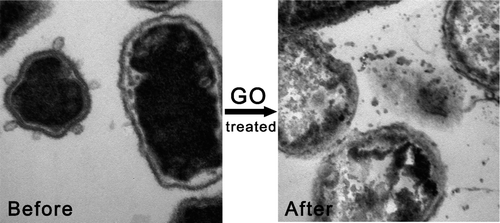Graphene: A new tool for fighting cavities and gum disease?

Dental diseases, which are caused by the overgrowth of certain bacteria in the mouth, are among the most common health problems in the world. Now scientists have discovered that a material called graphene oxide is effective at eliminating these bacteria, some of which have developed antibiotic resistance. They report the findings in the journal ACS Applied Materials & Interfaces.
Zisheng Tang and colleagues point out that dentists often prescribe traditional antibiotics to get rid of bacteria that cause tooth decay or gum disease. But with the rise in antibiotic resistance, new approaches are needed to address these problems, which can lead to tooth loss. Previous studies have demonstrated that graphene oxide—carbon nanosheets studded with oxygen groups—is a promising material in biomedical applications. It can inhibit the growth of some bacterial strains with minimal harm to mammalian cells. Tang's team wanted to see if the nanosheets would also stop the specific bacteria that cause dental diseases.
In the lab, the researchers tested the material against three different species of bacteria that are linked to tooth decay and gum disease. By destroying the bacterial cell walls and membranes, graphene oxide effectively slowed the growth of the pathogens. The researchers conclude that the nanosheets could have potential uses in dental care.
More information: Killing Dental Pathogens Using Antibacterial Graphene Oxide, ACS Appl. Mater. Interfaces, 2015, 7 (9), pp 5605–5611. DOI: 10.1021/acsami.5b01069
Abstract
Dental caries and periodontal diseases have a close relationship with microbes such as Streptococcus mutans, Porphyromonas gingivalis and Fusobacterium nucleatum. Graphene oxide (GO), as the derivative of graphene, plays an important role in many areas including biology and medicine. In particular, it has been known as a promising antimicrobial nanomaterial. In this study, we focused on the antimicrobial property of GO against dental pathogens. With the utilization of 3-(4,5-dimethylthiazol-2-yl)-2,5-diphenyl tetrazolium bromide (MTT) reduced test, colony forming units (CFU) counting, growth curve observation, live/dead fluorescent staining, and confocal laser scanning microscopy (CLSM), we found GO nanosheets were highly effective in inhibiting the growth of dental pathogens. Transmission electron microscopy (TEM) images revealed that the cell wall and membrane of bacteria lost their integrity and the intracellular contents leaked out after they were treated by GO. Therefore, GO nanosheets would be an effective antibacterial material against dental pathogens and the potential applications in dental care and therapy are promising
Journal information: ACS Applied Materials and Interfaces
Provided by American Chemical Society



















